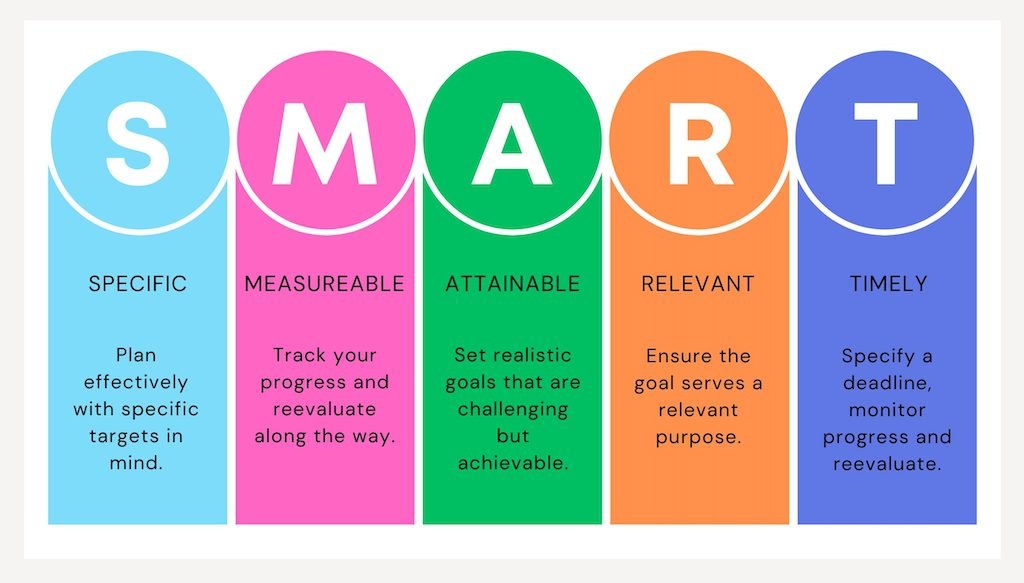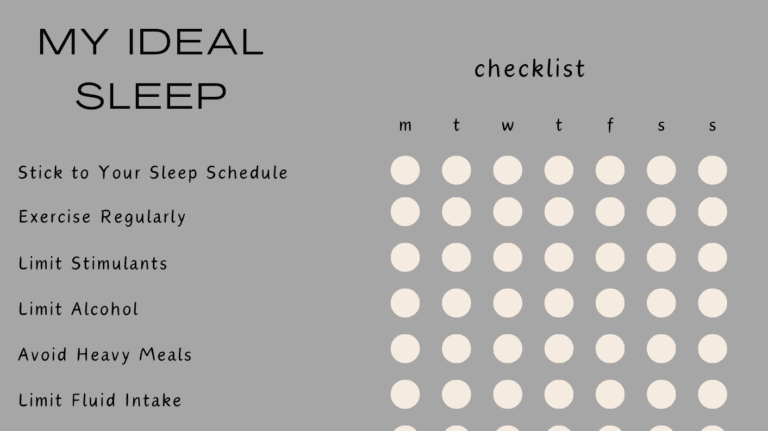The SMART Way of Setting and Achieving Goals

SMART goals, a beacon of clarity in the sea of dreams
Imagine this: people who write goals are more likely to achieve them than those who don’t. Dr. Gail Matthews, a psychology professor at Dominican University in California, conducted a study on 267 participants. The outcome revealed that 43% of successful participants who wrote down their goals achieved them. Even more mindblowing – amongst those participants who wrote down their goals, wrote action commitments for each goal and then shared their progress in regular updates with their friends, the success rate went up to 76%.
It shows that goal setting is a powerful tool for achieving your dreams. And you can enhance this tool by creating a solid structure around it.
This is where the SMART framework comes into play. Setting SMART goals will transform your dreams into actionable steps. It will help you clarify your ideas, focus your efforts, use your resources and time effectively, and establish a clear and steady course towards your aspirations.
What does the SMART Acronym Stand For?

SMART is an acronym that is used to guide the goal-setting process. It stands for specific, measurable, achievable, relevant, and time-bound.
Specific
Your goals should be clear and specific so that you can focus your efforts and stay motivated to achieve them. This specificity helps eradicate ambiguity and offers a clear target for your actions. These are my tips for setting specific goals:
- Define clear outcomes. Your goal should have a clear result upon completion. Instead of stating: “I want to lose weight,” make it specific by stating: “I want to lose 10 pounds.”
- Utilize detailed language. Use numbers, dates, and specific details that leave no ambiguity about what you intend to achieve. For example, instead of “I want to save more money,” you can specify: “I want to save $5,000 by December.”
Measurable
It’s crucial that you can measure your goals. You need to have tangible evidence showing that you have accomplished them. This measurability will allow you to track your progress and celebrate milestones. These are my tips for setting measurable goals:
- Remember the rule: What you can measure, you can manage.
- Establish your key performance indicators (KPIs) to monitor your journey. This could be the number of books you will read, certificates you will obtain, or followers you will gain.
Achievable
Your goals must also be realistic and attainable so you can reach them. The achievability will keep you grounded in reality and keep your goals within reach. Follow these tips:
- Dream big, but tether your dreams to reality. To do so, assess your resources, constraints, and time you think you need to reach your goals.
- Break monumental targets into smaller, achievable tasks. This will reduce the feeling of being overwhelmed and will help you see your progress better. Remember, even the smallest steps help push you forward:).
Relevant
The goals you set should matter to you! They also need to align with other relevant goals in your life or career. This relevance will help you ensure that your efforts align with your broader life themes. Follow these tips:
- Ensure your goals resonate with your core values and long-term vision for your life. This will help you feel congruent in your actions and will motivate you to continue on your journey. It will also make you feel good about yourself.
- Challenge yourself, and dare to venture outside your comfort zone. This is where true personal growth happens.
Time-Bound
Yes, every goal needs a deadline. You need to have a deadline to focus on and something to work towards. The time-bound commitments will create a sense of urgency and help you keep the momentum going. Follow these tips:
- Create a tangible timeframe, and convert your aspirations into time-sensitive missions.
- Prioritize your tasks and manage your time efficiently. Harness the present moment’s power by turning “someday” into “today.”
SMART goals are versatile. They can be used to achieve great results in project management, personal development, parenting skills, management review and beyond.
How to Write SMART Goals in 5 Steps

It’s time to craft your own goals. To write a SMART goal, integrate all the five elements of the SMART framework:
Identify What You Want to Achieve: Be specific about what you hope to accomplish. For example, I would like to learn to cook.
Determine How You Can Measure Progress and Success: Decide what metrics or benchmarks will indicate that you have achieved your goal. Following on our example! I would like to learn to cook one meal.
Assess Your Goal’s Achievability: Given your resources and constraints, ensure you set a realistic goal. For example, I will commit two evenings a week to learn to cook one meal.
Ensure Relevance: Align your goal with your overarching objectives or values. Our example: I am learning how to save money and eat healthier; therefore, cooking by myself will help me achieve this goal.
Set a Deadline: Determine when you aim to achieve your goal, providing a clear target to work towards. Our example: I will learn how to cook one meal by 30 April.
A template for your SMART goal could be:
“By [specific deadline], I will [specific action] to achieve [specific outcome], measuring progress through [specific metric].”
And the goal would be:
“By this day next month, I will commit two evenings a week to learn how to cook one meal. I will cook this meal from scratch for my family.”
More Examples of SMART Goals
Career Development: “I will acquire a new certification relevant to my field within six months to enhance my job prospects.”
Personal growth: “I will read one book related to personal finance every month to improve my financial literacy.”
Social Media Management: I will “increase monthly users on our social media platforms by 15% over the next quarter by posting engaging content daily and conducting bi-weekly management reviews to track progress”.
SMART Goal Action Plan

A robust SMART goal action plan will be a potent catalyst for reaching your goals. Regardless of whether this is a personal goal, professional goal, or business aspiration, such a plan will be a blueprint that will guide you on your journey to achieving what you want in life.
This is because SMART goal setting requires you to define your objectives with precision. It also aims to motivate you and facilitate effective resource allocation.
The action plan template could look something like this:
Specific Goal:- First, elucidate your ultimate goal and translate it into SMART objectives.
Measures of Success: Decide what you will measure and how you will do it.
Actions Needed: Identify specific tasks you need to reach these defined objectives. This will keep your efforts sharply focused.
Resources Required: Create a detailed list of resources (new skills, things, finances or people) you need to help you reach your objectives.
Achievability Assessment: Do a reality check and re-evaluate fine tune and readjust your plan as necessary. The beauty of SMART goal action plans lies in their flexibility. You can change it; however, the flexibility can vary depending on the type of goal.
Relevance Rationale: Assess if this plan is relevant to you and if you want to continue. Yes, it is ok to pause or abandon it if you decide your life priorities have changed.
Timeframe: Develop a schedule with a clearly outlined time period – start and finish date.
Enhance your Goal-Setting with SMARTer Goals

You can enhance your goal setting with SMARTer. The “ER” translates into “Evaluate” and “Readjust”. It’s a richer, more in-depth approach to goal-setting. It will empower you to better shape your path to achievement and promote your dynamic learning. Here’s why they are also essential:
Evaluate:
- Periodic and systematic evaluation will help you identify potential bottlenecks, assess if you are on the right track to what you want to achieve, and determine how well you are progressing.
- When evaluating your goals, ensure you celebrate even the smallest successes.
- Eradicate any obstacles as soon as you spot them.
Readjust:
- Be flexible in the goal-setting process. We live in a fast-changing world, and you need to adapt to changing circumstances or unforeseen challenges. You may need to readjust timelines, allocate additional resources, or reset your targets.
- Work on developing a growth mindset. This will help you make needed changes quicker and reduce the sense of feeling overwhelmed.
Following Up on SMART Goals: What to Do Next

Regularly Review and Refine: Revisit your goals to ensure they align with your overall objectives and mission. Check on your progress to identify any roadblocks and brainstorm solutions. Make any necessary adjustments to reflect changes in circumstances or priorities. Essentially, it is an ER part of SMARTer goals.
Set Up a Tracking System: Implement a method for monitoring progress. You could use software, spreadsheets, or regular check-ins with yourself or your friends to see how you are getting on with your goal.
Celebrate Milestones: Recognize and celebrate when you meet significant milestones. This will boost your morale and motivation to continue pushing towards the final goal.
Stay Flexible: Be prepared to adapt your plan as you progress. New challenges or opportunities might require you to change your approach.
Get Feedback: Seek input from your friends, a coach, or a mentor. External perspectives are valuable insights and will help you refine your strategy.
Reflect and Learn: After achieving a goal, take the time to reflect on the journey. Identifying what worked well and what didn’t will provide you with valuable lessons for future goal setting.
Pros and cons of SMART goals
Pros
Cons
Things you need to know
In this article, we talked about the SMART framework for setting effective goals.
We explained that SMART stands for Specific, Measurable, Achievable, Relevant, and Time-bound.
We showed how The SMART method highlights the importance of:
- being clear about what you want to achieve,
- making sure you can track your progress,
- ensuring your goal is within reach,
- connecting it to your bigger life plans,
- and setting a deadline.
We guided you through the process of:
- creating SMART goals,
- making a plan to reach them,
- Keeping up with your progress by regularly checking i and adjusting as needed.
We also pointed out some downsides to using SMART goals, like risks of making things too simple, being less flexible, feeling too much pressure, limiting creativity, and not focusing enough on personal growth.
Regardless of the downsides, remember that using the SMART method can transform your initial, vague dreams into clear, attainable targets. Developing a growth mindset and sticking to your values will help you stay on track to your goal. It will also help you respond to changing circumstances of your own.





